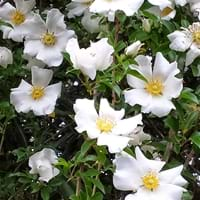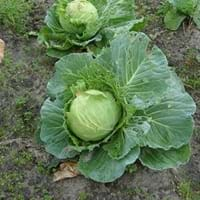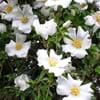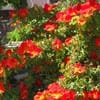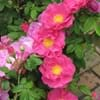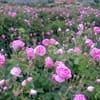Life Span
Perennial
Annual
Type
Flowering Plants, Ornamental Plant, Perennial, Shrub
Vegetable
Origin
Laos, Southern China, Taiwan, Vietnam
Europe, Mediterranean, Canary Islands, Northern Africa
Types
Not Available
Not Available
Habitat
Not Available
Not Available
USDA Hardiness Zone
Not Available
Not Available
AHS Heat Zone
Not Available
6-1
Sunset Zone
Not available
A1, A2, A3, H1, H2, 1a, 1b, 2a, 2b, 3a, 3b, 4, 5, 6, 7, 8, 9, 10, 11, 12, 13, 14, 15, 16, 17, 18, 19, 20, 21, 22, 23, 24
Habit
Clump-Forming
Rosette/Stemless
Flower Color
White
Yellow
Flower Color Modifier
Bicolor
Bicolor
Fruit Color
Non Fruiting Plant
Brown
Leaf Color in Spring
Green
Not Available
Leaf Color in Summer
Green
Green, Gray Green, Dark Green
Leaf Color in Fall
Green
Green, Gray Green
Leaf Color in Winter
Green
Green, Gray Green
Leaf Shape
Pinnate
Spinach Type
Plant Season
Spring, Summer, Fall
Spring, Fall, Winter
Sunlight
Full Sun, Partial Sun
Full Sun, Partial Sun
Type of Soil
Loam, Sand
Loam, Sand
The pH of Soil
Acidic, Neutral
Neutral, Alkaline
Soil Drainage
Well drained
Well drained
Bloom Time
Spring, Late Spring, Early Summer, Summer, Late Summer, Early Fall, Fall
Spring, Late Spring, Early Summer
Repeat Bloomer
Not Available
No
Tolerances
Drought
Drought
Where to Plant?
Container, Ground, Pot
Container, Ground, Pot
How to Plant?
Cuttings
Seedlings
Plant Maintenance
Medium
Medium
Watering Requirements
Average Water Needs
Do Not over Water
In Summer
Lots of watering
Lots of watering
In Spring
Moderate
Moderate
In Winter
Average Water
Average Water
Soil pH
Acidic, Neutral
Neutral, Alkaline
Soil Type
Loam, Sand
Loam, Sand
Soil Drainage Capacity
Well drained
Well drained
Sun Exposure
Full Sun, Partial Sun
Full Sun, Partial Sun
Pruning
Remove damaged leaves, Remove dead branches, Remove dead leaves
No need to prune, Remove damaged leaves, Remove dead branches, Remove dead leaves
Fertilizers
All-Purpose Liquid Fertilizer
Nitrate based fertilizers
Pests and Diseases
Beetles, Black Spot, Caterpillars, Downy mildew, Mosaic viruses, Powdery mildew, Rust, Scale insects, Thripes
Alternaria Leaf Spot, Anthracnose, Aphids, Beet armyworm, Black rot, Cabbage looper, Cercospora leaf spot, Clubroot, Cutworms, Damping-off, Diamondback moth, Downy mildew, Flea Beetles, Leaf spot, Red blotch, Root knot nematode, Thripes
Plant Tolerance
Drought
Drought
Flower Petal Number
Double
Single
Edible Fruit
Not Available
No
Foliage Texture
Medium
Bold
Foliage Sheen
Glossy
Matte
Invasive
Not Available
No
Self-Sowing
Not Available
Yes
Attracts
Birds, Butterflies
Bugs
Allergy
Rash
Not Available
Aesthetic Uses
Showy Purposes
Not Used For Aesthetic Purpose
Beauty Benefits
Not Available
Not Available
Environmental Uses
Air purification
soil erosion prevension on hill slopes
Medicinal Uses
Not Available
anti-cancer, Heart problems
Part of Plant Used
Flowers
Leaves
Other Uses
Oil is used in perfume, soaps, creams, etc.
Used as a vegetable
Used As Indoor Plant
Yes
No
Used As Outdoor Plant
Yes
Yes
Garden Design
Container, Cutflower, Feature Plant, Foundation, Mixed Border, Topiary / Bonsai / Espalier
Container, Edible, Herb / Vegetable
Botanical Name
Rosa laevigata
BRASSICA oleracea
Common Name
Cherokee Rose
Carolina Cabbage Collard Greens, Collard Greens
In Hindi
Cherokee rose
collard साग
In German
Die Cherokee-Rose
Blattkohl
In French
Le rosier des Cherokees
Chou cavalier
In Spanish
rosa cherokee
Brassica oleracea viridis
In Greek
Cherokee rose
λάχανο
In Portuguese
Cherokee rose
greens kollard
In Polish
Cherokee rose
kollard zieleni
In Latin
Cherokee rose
vireta kollard
Phylum
Magnoliophyta
Magnoliophyta
Class
Magnoliopsida
Magnoliopsida
Order
Rosales
Brassicales
Family
Rosaceae
Brassicaceae
Clade
Not Available
Not Available
Tribe
Not Available
Brassiceae
Subfamily
Not Available
Not Available
Number of Species
Not Available
Season and Care of Cherokee Rose and Collard Greens
Season and care of Cherokee Rose and Collard Greens is important to know. While considering everything about Cherokee Rose and Collard Greens Care, growing season is an essential factor. Cherokee Rose season is Spring, Summer and Fall and Collard Greens season is Spring, Summer and Fall. The type of soil for Cherokee Rose is Loam, Sand and for Collard Greens is Loam, Sand while the PH of soil for Cherokee Rose is Acidic, Neutral and for Collard Greens is Neutral, Alkaline.
Cherokee Rose and Collard Greens Physical Information
Cherokee Rose and Collard Greens physical information is very important for comparison. Cherokee Rose height is 200.00 cm and width 300.00 cm whereas Collard Greens height is 30.50 cm and width 30.00 cm. The color specification of Cherokee Rose and Collard Greens are as follows:
Cherokee Rose flower color: White
Cherokee Rose leaf color: Green
Collard Greens flower color: Yellow
- Collard Greens leaf color: Not Available
Care of Cherokee Rose and Collard Greens
Care of Cherokee Rose and Collard Greens include pruning, fertilizers, watering etc. Cherokee Rose pruning is done Remove damaged leaves, Remove dead branches and Remove dead leaves and Collard Greens pruning is done No need to prune, Remove damaged leaves, Remove dead branches and Remove dead leaves. In summer Cherokee Rose needs Lots of watering and in winter, it needs Average Water. Whereas, in summer Collard Greens needs Lots of watering and in winter, it needs Average Water.
